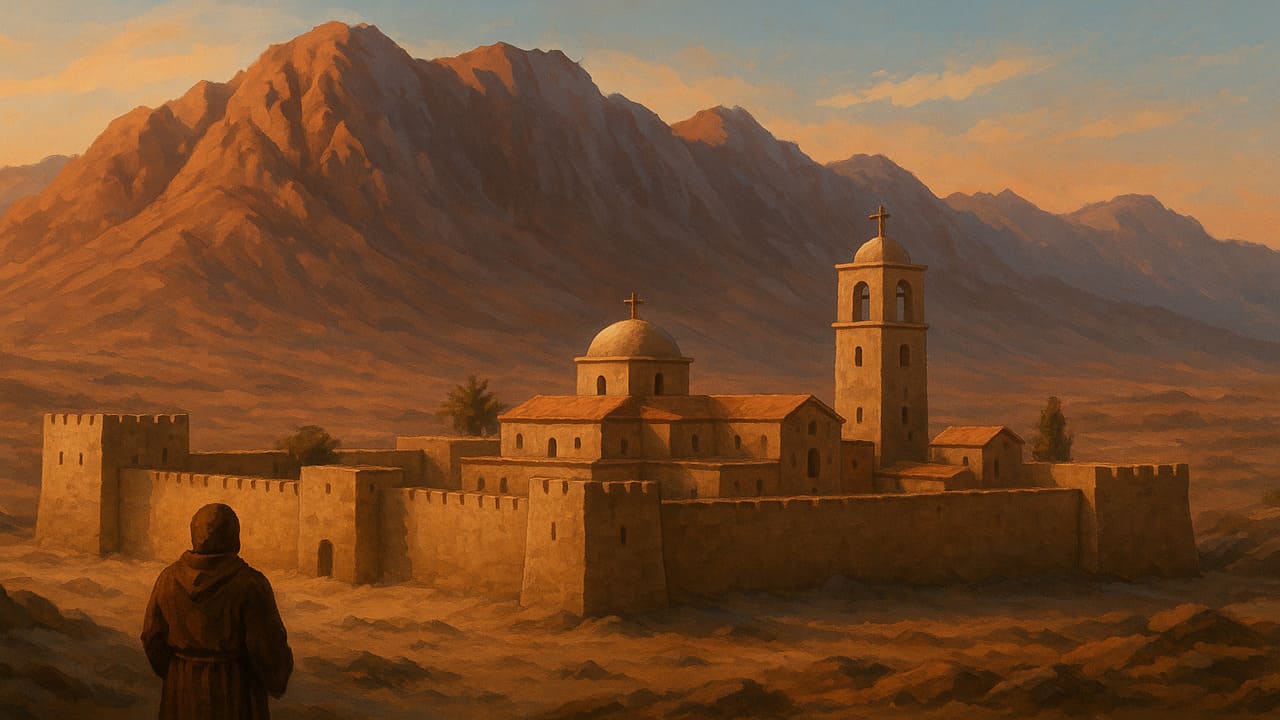
Thorn Ville Church – In the vast, sun-scorched stretches of Egypt’s Eastern Desert, nestled between barren cliffs and the Red Sea Mountains, stands one of Christianity’s most enduring monuments: The Monastery of Saint Anthony. Dating back to the mid-fourth century AD, this secluded and fortified religious complex is considered the oldest Christian monastery still in use today, and it remains a powerful symbol of solitude, devotion, and resilience.
Far from Egypt’s bustling cities and tourist sites, the Monastery of Saint Anthony is not just a relic of early Christian history it is a living testament to the origins of monastic life and the spiritual revolution sparked by one man’s search for silence and God.
The monastery’s story begins with Saint Anthony the Great, an Egyptian ascetic born in 251 AD. Often referred to as the Father of Christian Monasticism, Anthony left behind his wealth and worldly possessions in his early twenties to live in the desert, embracing solitude, prayer, and extreme simplicity.
Inspired by Jesus’ words to “sell what you own and give the money to the poor,” Anthony retreated into the harsh desert landscape of the Eastern Desert, where he lived in isolation for decades. His lifestyle drew followers who camped nearby, eager to learn from his wisdom and emulate his devotion.
After Anthony’s death in 356 AD, his disciples and admirers established a permanent structure around the cave where he lived. Thus, the Monastery of Saint Anthony was born, not as a grand architectural feat, but as a spiritual refuge and a model for countless monastic communities that would follow across the Christian world.
Also Read : Saint Lazarus Church: A Timeless Testament in the Heart of Larnaca
Despite its remote location, the Monastery of Saint Anthony is an architectural marvel. Protected by tall stone walls and thick towers, the complex resembles a fortress, built not only to preserve the sanctity of monastic life but also to defend against Bedouin raids and centuries of conflict.
Within these protective walls lie churches, chapels, gardens, dormitories, a bakery, and even a library that has preserved ancient Coptic manuscripts and liturgical texts for over 1,000 years. One of the most sacred structures is the Church of Saint Anthony, which holds the saint’s tomb and displays beautiful Coptic frescoes dating from the 13th century.
The monastery’s source of life is a freshwater spring an anomaly in the desert which feeds its gardens and sustains its small community of monks.
Even today, the monastery remains active, inhabited by Coptic Orthodox monks who follow the ancient rhythms of prayer, work, and silence. Life here is slow and disciplined: the monks rise before dawn for communal prayer, spend hours in contemplation or copying religious texts, and work to maintain the physical needs of the monastery.
The liturgy is spoken in Coptic, a language descended from ancient Egyptian, kept alive within these walls. The monks follow in the spiritual footsteps of Saint Anthony, seeing their life not as escape from the world, but as deep engagement with God through simplicity and surrender.
Visitors are welcome though with limits. Pilgrims and scholars alike come to experience the stillness of the desert and the wisdom of the monastic tradition, often speaking of the overwhelming peace that blankets the site.
Read More : Unique Habits of Intelligent People, According to Experts, Inspired by Bill Gates
While many ancient religious sites have become mere tourist destinations or ruins, the Monastery of Saint Anthony continues to live, breathe, and inspire. In a time when life feels fast, crowded, and noisy, this desert sanctuary offers something countercultural: stillness, depth, and a reminder that solitude can be a source of strength, not weakness.
Beyond the high walls and arched gates lies not just a monument, but a movement one that began with a man seeking God in the silence and continues with monks who carry his vision through centuries of history, persecution, and spiritual revival.
As the sun sets over the jagged desert peaks, casting long shadows across the monastery’s stone courtyards, one thing becomes clear: the Monastery of Saint Anthony is not just a place it is a living prayer, echoing quietly through the sands of time.
Thornville Church - Your Source for Biblical Inspiration - Sacred art in churches became a visual language that shaped early…
Thornville Church - Your Source for Biblical Inspiration - Across changing empires and cultures, historic churches preserved Christian teachings with…
Thornville Church - Your Source for Biblical Inspiration - The miracle of spiritual deliverance appeared in Philippi when Paul freed…
Thornville Church - Your Source for Biblical Inspiration - Historians now highlight how women in early church shaped theology, leadership,…
Thornville Church - Your Source for Biblical Inspiration highlights how church orientation toward east shapes Christian worship, architectural symbolism, and…
Thornville Church - Your Source for Biblical Inspiration reports that recent necropolis discoveries at Colossae are reshaping how scholars read…